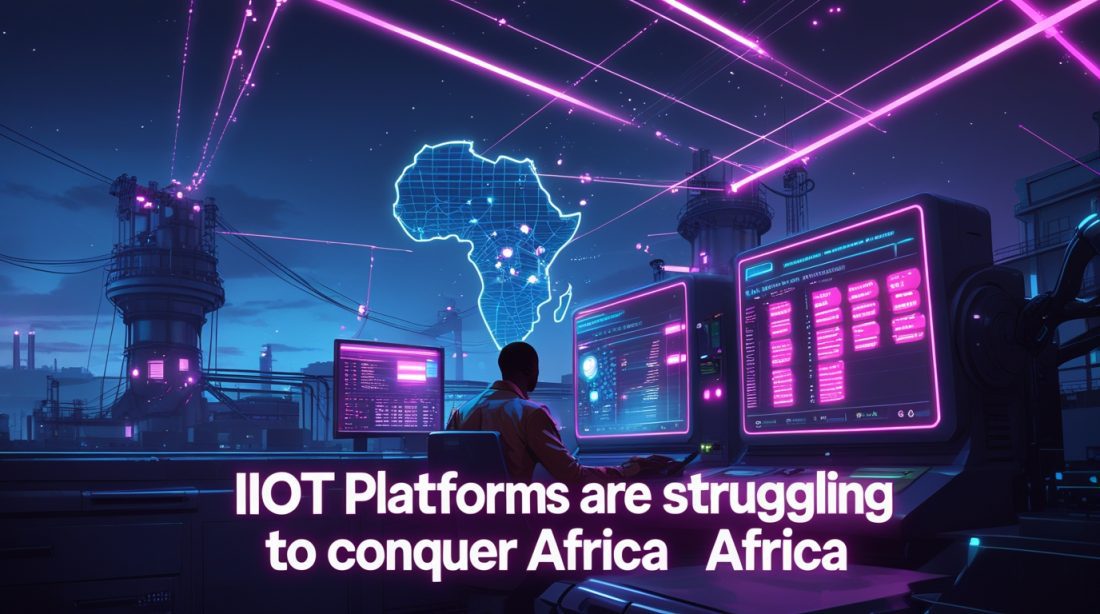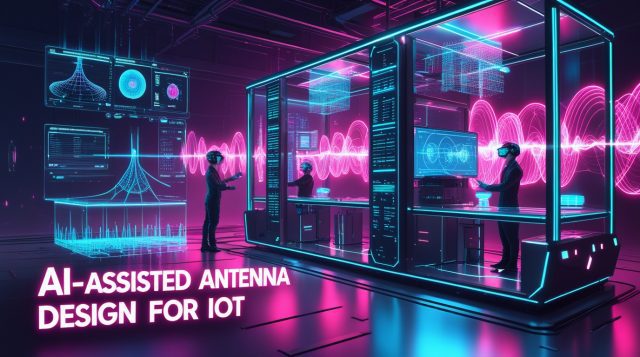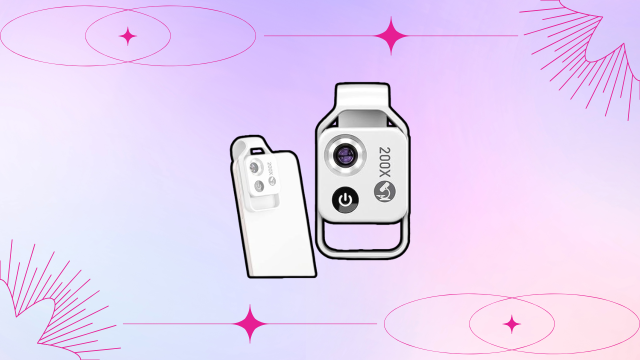A single, unexpected border crossing can skyrocket your connectivity costs by 100 times. Fran Manis, founder of an IoT solutions company in Botswana, explains the stark reality of pan-African deployments: “In some regions where the regulatory environment is a bit wild west… the costs are extremely high”.
Why Multilingual IIoT Platforms Are Struggling to Conquer Africa in 2025
In a factory in Nairobi, a Swahili-speaking operator squints at an IIoT dashboard error message written in English. He hesitates, unsure whether to shut down the line immediately or let it run. Meanwhile, in a South African mining operation, a safety alert in English fails to convey urgency to isiZulu-speaking technicians.
Across Africa, Industrial Internet of Things (IIoT) platforms are hitting an invisible wall: the continent’s profound linguistic diversity.
Why Language Barriers Are IIoT’s Greatest Challenge in Africa
The promise of IIoT in Africa is tremendous – predictive maintenance that prevents costly breakdowns, real-time monitoring of dispersed assets, and data-driven efficiency across mining, manufacturing, and agriculture. But this promise remains largely unfulfilled when technology cannot communicate effectively with its users.
Africa’s linguistic landscape is uniquely complex. With over 2000 indigenous languages, and often three or more official languages per country, the continent presents a multilingual challenge that most IIoT platforms were never designed to handle.
The consequences are very real: A 2025 analysis of IIoT implementations across the continent reveals that systems without proper multilingual support suffer from lower adoption rates, more operational errors, and increased safety risks. When critical information about machine status, safety procedures, or maintenance requirements isn’t understood, the entire value proposition of IIoT collapses.
Why Linguistic Diversity Creates a Data Desert for IIoT
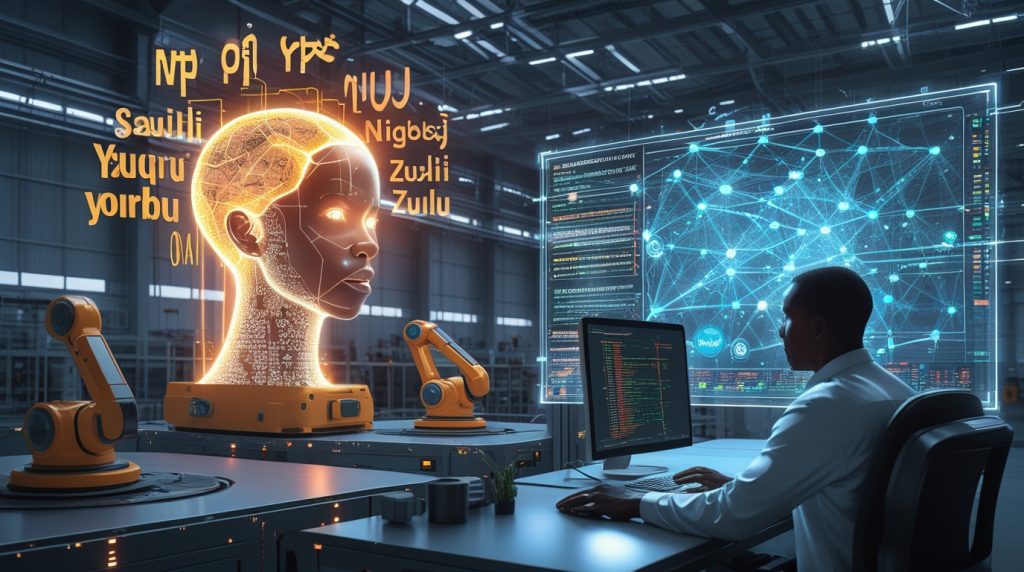
The fundamental challenge for IIoT platforms in Africa boils down to data – or more accurately, the lack of it. Most of Africa’s languages are considered “low-resource” in the digital sphere, meaning there’s insufficient digital text available to effectively train the AI models that power modern IIoT interfaces.
The Data Scarcity Problem
Dr. Almaz Yohannis Mbathi, a lecturer at the University of Nairobi leading efforts to train AI systems on African languages, identifies the core technical challenges: “sparse datasets, dialectal variations, code-switching, and limited benchmarks”. Unlike English, which has centuries of digitized text and speech data, many African languages have minimal digital presence. Nation Africa
This creates a vicious cycle: with limited digital data, AI and Natural Language Processing (NLP) systems cannot accurately understand or generate these languages, leading to poor user experiences that further discourage digital adoption.
The Integration Challenge
Even when basic translation exists, IIoT systems face the complex task of integrating with multiple enterprise systems – from ERP and MES to CMMS and SCADA – while maintaining consistent multilingual support across all touchpoints.
Voice agents in smart factories, for instance, must understand domain-specific vocabulary in multiple languages and accents while operating reliably in noisy industrial environments. As one technical paper notes, effective industrial voice agents require “domain vocabularies: Custom language packs for equipment names, materials, SKUs, fault codes, and local jargon” across different languages.
Why Technical Architecture Fails in Multilingual Contexts
The core architecture of most IIoT platforms creates inherent limitations for multilingual deployment. Many systems were built with an assumption of linguistic homogeneity that simply doesn’t exist in African markets.
The Legacy System Integration Issue
Many industrial environments in Africa still operate legacy equipment with limited digital interfaces, requiring complex retrofitting to work with modern IIoT solutions. These legacy systems often lack any multilingual capabilities, creating a technical debt that’s difficult to overcome. See how retrofitting and protocol challenges affect deployments in practice. (example: solving legacy PLC and integration bottlenecks)
As one analysis of IIoT challenges notes: “Legacy system integration” remains a significant hurdle, with organizations needing “protocol converters, edge computing, or hybrid gateways” that introduce “additional complexity and potential points of failure”.
Resource Constraints and Connectivity Gaps
Even when multilingual interfaces are available, resource constraints can render them impractical. The head of marketing at Helm, a South African customer experience company, points out that while English is only spoken at home by 8% of South Africans, it remains the primary language for brands and technology platforms. Helm’s approach to multilingual NLU shows how commercial systems are adapting to local needs. helm.africa
The computational resources required to run sophisticated NLP models for multiple languages simultaneously can be prohibitive, especially in edge computing scenarios common in African IIoT deployments where bandwidth may be limited.
Why Businesses Can’t Ignore the Multilingual Imperative

The consequences of ignoring multilingual requirements in IIoT deployments extend far beyond mere inconvenience – they impact safety, efficiency, and the bottom line.
The Safety and Compliance Implications
In industrial environments, miscommunication can be dangerous. When safety alerts, operational procedures, or maintenance instructions aren’t understood in real-time, the risk of accidents increases significantly. One analysis of voice agents in smart factories highlights how these systems must incorporate “safety workflows: Double-confirmation prompts, lockouts, and integration with safety PLCs and interlocks” – all of which become critically dependent on language comprehension.
The Operational Efficiency Cost
From mining operations to manufacturing floors, language barriers directly impact productivity. Technicians may misinterpret data, operators might skip complex procedures they don’t understand, and maintenance crews could waste precious time deciphering alerts rather than addressing issues.
Fran Manis, whose company provides IoT solutions across multiple African countries, emphasizes that without proper connectivity and localization, “If our devices are not connecting, then our solution doesn’t work”. The same principle applies when human operators cannot effectively interact with the technology.
How Grassroots AI and Localized Platforms Are Breaking Barriers
Despite these challenges, innovative approaches are emerging to bridge the multilingual gap in African IIoT deployments.
Community-Driven Language AI
Across Africa, researchers and developers are taking matters into their own hands. Initiatives like Masakhane — a Pan-African natural language processing network whose name means “we build together” in isiZulu — are creating community-driven solutions to the language resource gap. The project boasts over 1,000 contributors working to develop translation results for dozens of African languages.
Dr. Mbathi’s work at the University of Nairobi aligns closely with this approach, focusing on creating models that draw on local datasets and cultural contexts, ensuring technology reflects Africa’s linguistic diversity rather than defaulting to Western-centric systems.
Strategic Implementation of Voice Technology
Voice agents represent a promising solution for multilingual industrial environments. Modern systems designed for smart factories can support multiple accents and languages, with the ability to “switch languages per user or per site, with consistent intents across locales”. This technology is particularly valuable in contexts where literacy levels vary or where hands-free operation is essential.
Companies like Helm in South Africa have developed AI engines with “natural language understanding (NLU) into the Helm Engine,” giving it the ability to “not only understand the intent behind what users are saying, but respond in any language.”
The Path Forward: Building Truly Multilingual IIoT Ecosystems
Solving the multilingual challenge in African IIoT requires a fundamental shift in approach – from treating language as an afterthought to making it a core design principle.
A Collaborative Framework for Success
- Invest in Local Language AI: Support grassroots initiatives like Masakhane and academic research focused on creating high-quality, ethical, and community-owned datasets for African languages.
- Develop Adaptive IIoT Architecture: Implement edge computing platforms that can handle multiple languages locally, reducing latency and bandwidth requirements while improving responsiveness. (see edge strategies).
- Prioritize Domain-Specific Language Models: Create industrial vocabularies and jargon in local languages, moving beyond basic conversation to technical terminology specific to sectors like mining, manufacturing, and energy.
- Establish Ethical Data Practices: As Michael Michie, co-founder of Everse Technology Africa, warns, there’s a need for “clear conditions to guide the retrieval of language data and protect the privacy of indigenes of the African communities whose languages are being used to train AI models”.
The Business Case for Investment
Companies that crack the multilingual code stand to gain significant competitive advantage in Africa’s growing industrial sectors. The ability to deploy IIoT systems that workers can actually use in their preferred languages translates to faster adoption, fewer errors, better safety outcomes, and ultimately, higher return on investment.
As one analysis of Africa’s IoT evolution notes: “Companies that invest in understanding these nuances achieve adoption rates and customer satisfaction levels that generic solutions cannot match” (see regional IIoT platform analysis).
The Future of IIoT in Africa Speaks Many Languages
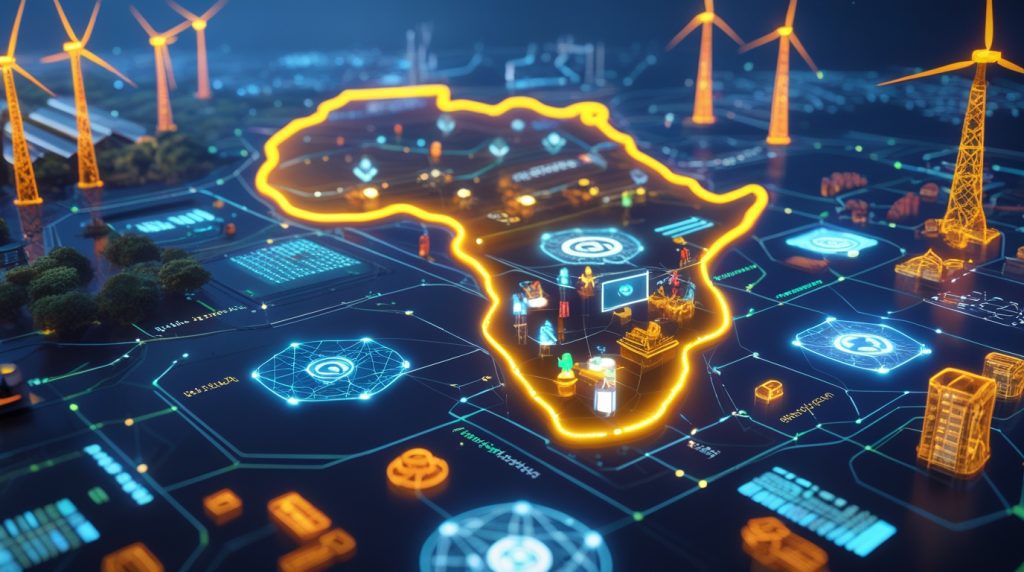
The struggle of IIoT platforms with multilingual interfaces in Africa represents more than a technical hurdle – it’s a critical business challenge that will determine which solutions succeed in the continent’s industrial sectors. While current platforms are struggling, the ongoing work of researchers, startups, and community-driven initiatives points toward a more inclusive future.
As Dr. Mbathi envisions: “I hope to see African students leading this research and communities retaining control of their cultural data”. The companies that will thrive in Africa’s IIoT landscape are those partnering with these local experts to build systems that don’t just operate in Africa, but truly communicate with it.
The transformation of African industries through IIoT doesn’t need to wait for a monolingual future. By embracing the continent’s linguistic diversity as a strength rather than treating it as a obstacle, we can build industrial ecosystems that are more inclusive, more efficient, and ultimately more resilient.
FAQ
Why is multilingual support so important for IIoT in Africa?
Multilingual support is critical because Africa has over 2000 languages, and when IIoT systems can’t communicate effectively with users in their preferred languages, it leads to operational errors, safety risks, and lower adoption rates that undermine the technology’s value proposition.
What makes African languages particularly challenging for IIoT platforms?
Most African languages are “low-resource” languages, meaning there’s limited digital text available to train the AI models that power modern IIoT interfaces. This creates a data scarcity problem that’s compounded by dialectal variations and code-switching between languages.
Which African languages are currently best supported by AI and IIoT?
Languages with larger speaker populations like Swahili, Hausa, and isiZulu are seeing growing support through initiatives like Masakhane and commercial implementations in countries like South Africa that support multiple official languages.
How are voice agents helping overcome language barriers in industrial settings?
Modern voice agents for smart factories can support multiple languages and accents, with the ability to switch languages per user or site while understanding domain-specific industrial vocabulary. This is particularly valuable in contexts where literacy levels vary or hands-free operation is essential.
What role do local universities and researchers play in solving this challenge?
African academics like Dr. Almaz Yohannis Mbathi of the University of Nairobi are leading efforts to train AI systems on African languages and contexts, ensuring technology reflects Africa’s linguistic diversity rather than defaulting to Western-centric systems.
